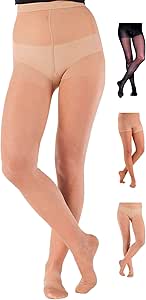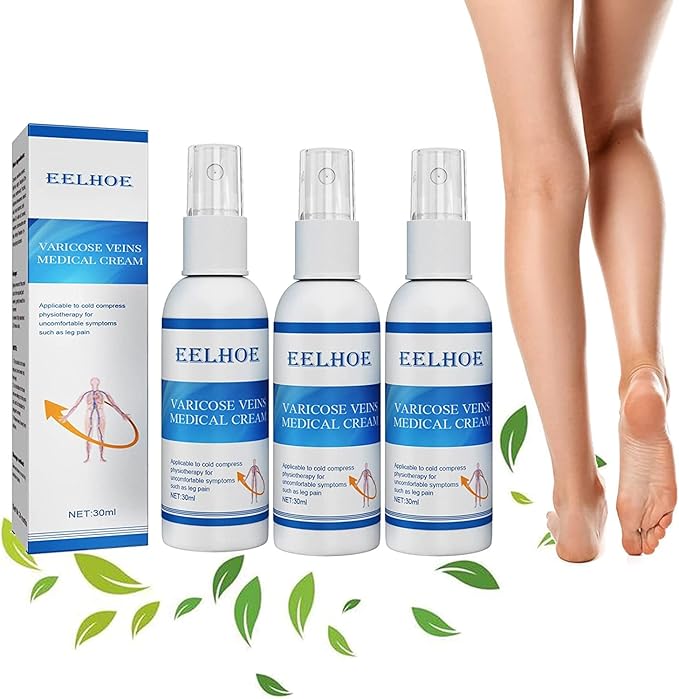Varicose veins are a common condition affecting millions of people worldwide, characterized by swollen, twisted veins that can be both unsightly and uncomfortable. Compression tights have emerged as a popular solution for managing varicose veins, but how do they work? In this article, we will explore the science behind compression tights, their effectiveness in treating varicose veins, and the research supporting their use.
What Are Varicose Veins?

Varicose veins occur when the valves in the veins that help regulate blood flow become weakened or damaged. This can lead to blood pooling in the veins, causing them to become enlarged and visible under the skin. While generally not a serious health concern, varicose veins can cause pain, swelling, and discomfort.
- Prevalence: Approximately 23% of adults in the United States are affected by varicose veins.
- Causes: Common causes include genetics, age, obesity, pregnancy, and prolonged standing.
- Symptoms: Symptoms may include aching, heaviness in the legs, swelling, and visible bulging veins.
What Are Compression Tights?

Compression tights are specially designed garments that apply pressure to the legs, helping to improve blood circulation. They are made from elastic materials that provide graduated compression, meaning the pressure is highest at the ankle and decreases as it moves up the leg. This design promotes better venous return and helps reduce the symptoms associated with varicose veins.
The Science Behind Compression Therapy

The underlying principle of compression therapy lies in the mechanics of blood flow. The circulatory system relies on a combination of heart pumping and muscle contractions to move blood throughout the body. When blood flows back to the heart from the legs, it must work against gravity. Compression tights enhance this process through several mechanisms:
- Increased Blood Flow: Compression tights help to increase venous return by narrowing the veins, which promotes more efficient blood flow back to the heart.
- Reduced Venous Pressure: By providing consistent pressure, compression tights reduce the pressure within the veins, alleviating discomfort and preventing blood pooling.
- Enhanced Muscle Pump: The graduated compression helps the calf muscles act as a pump, facilitating better circulation during physical activity.
Research has shown that compression garments can significantly reduce the risk of venous stasis and associated complications, such as deep vein thrombosis (DVT) and ulcers.
Effectiveness of Compression Tights for Varicose Veins

Numerous studies have explored the effectiveness of compression tights in managing varicose veins. The general consensus is that they are beneficial for symptom relief and may help prevent the progression of the condition.
Case Studies and Research Findings

Several studies highlight the positive outcomes associated with wearing compression tights:
- Study on Symptom Relief: A study published in the Journal of Vascular Surgery found that participants who wore compression stockings reported a significant reduction in symptoms such as pain, heaviness, and swelling compared to those who did not use compression therapy.
- Long-term Benefits: Research in Phlebology suggested that long-term use of compression garments can prevent the progression of varicose veins and reduce the likelihood of developing complications.
- Comparison with Other Treatments: In a clinical trial comparing compression therapy with sclerotherapy (a common minimally invasive treatment for varicose veins), patients wearing compression tights experienced similar levels of symptom relief, with fewer side effects.
Choosing the Right Compression Tights

When selecting compression tights for varicose veins, it is essential to consider factors such as compression level, fit, and style. Here are some tips to help you make the right choice:
- Compression Level: Compression tights are available in various levels of pressure, typically ranging from 15-20 mmHg (mild) to 30-40 mmHg (firm). Consult with a healthcare professional to determine the appropriate level for your condition.
- Fit: Ensure the tights fit snugly but are not too tight. They should provide pressure without causing discomfort.
- Style: Compression tights come in various styles, including full-length, knee-high, and thigh-high options. Choose a style that suits your needs and preferences.
Potential Risks and Considerations
While compression tights are generally safe for most individuals, there are some considerations to keep in mind:
- Skin Irritation: Some individuals may experience skin irritation or allergic reactions to the materials used in compression garments.
- Improper Use: Wearing compression tights incorrectly or choosing the wrong compression level can lead to complications. It is advisable to seek guidance from a healthcare professional.
- Pre-existing Conditions: Individuals with certain medical conditions, such as peripheral artery disease or severe heart disease, should consult a doctor before using compression therapy.
Compression tights offer a scientifically-backed approach to managing varicose veins, providing symptom relief and potentially preventing further complications. By improving blood circulation and reducing venous pressure, these garments can enhance the quality of life for those suffering from this common condition. When selecting compression tights, it is crucial to consider factors such as compression level, fit, and style, and to consult with a healthcare professional to ensure appropriate use. Overall, understanding the science behind compression therapy empowers individuals to make informed decisions about their health and well-being.
In summary, compression tights serve as an effective tool for managing varicose veins, supported by research and clinical evidence. With proper guidance and usage, they can significantly alleviate symptoms and improve the lives of those affected by this condition.